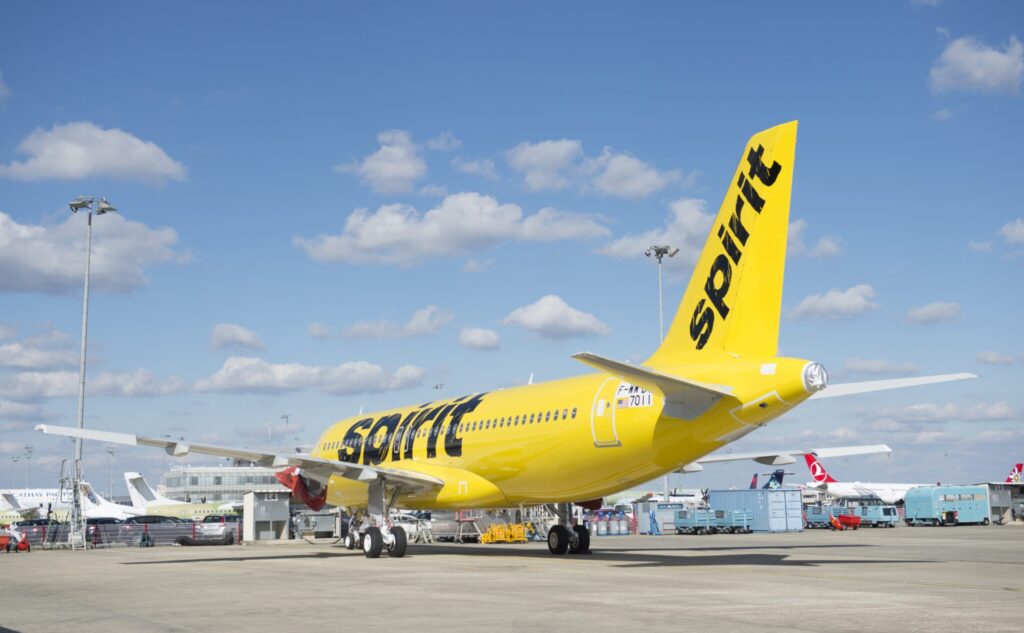
Skift Take
The beleaguered ultra-low-cost carrier filed for bankruptcy this week. Here is what executives are proposing for the airline post-bankruptcy.
Before Spirit Airlines filed for Chapter 11 bankruptcy on Monday, it was already making some changes to its business model to lure back travelers.
Some of these changes include bundled fare options and a form of premium seating that blocks off the middle seat.
The airline also eliminated change and cancel fees, which has become a more permanent trend in the industry since the pandemic. American, Delta and United have scrapped change fees for all but their cheapest fares.
But Spirit executives are proposing more changes that shift away from the ultra-low-cost model the carrier once championed. Posted in a regulatory filing on Monday, the turnaround plan called âProject Bravoâ proposes initiatives like free in-flight Wi-Fi and a codeshare with another airline.
In a court filing, Spirit CFO Fred Cromer said the industry had significantly changed since the pandemic.
âThe airline industry (particularly in the United States) is contending with shifting consumer demand and operational headwinds, such that it is unrecognizable from what it was pre-pandemic,â he said.
Free Wi-Fi and Snacks
Some of the biggest changes include free in-flight Wi-Fi for passengers who join Spiritâs loyalty program and serving all passengers a water and a snack.
Some of Spiritâs premium fares like âGo Bigâ and âGo Comfyâ already include snacks and beverages.
The carrier is also looking to add larger overhead bins and in-seat power.
Premium cabins would be able to access free streaming Wi-Fi, while the economy ones would be able to browse the internet.
Spirit is also proposing to simplify its boarding zones and reduce wait times with its contact center service. Those with premium tickets would have dedicated lines in key airports.
Realigning Spirit’s Network
Another aspect of Spiritâs turnaround plan includes realigning its network. In the past few months, the airline has already scrapped dozens of routes as it looked to prioritize its more profitable flights.
Executives are proposing to deploy 20 to 30 aircraft from the cities with the lowest revenue performance to âtop value seekerâ cities. Spirit intends to start with renewing focus on Fort Lauderdale given its consistent high level of demand, especially during the winter months.
The carrier said once its fleet capacity rebounds, it plans to add more âfocus citiesâ in the first quarter of 2026. With redeployments, Spirit said it expects to have stronger pricing power in certain markets.
Reforming Spirit’s Loyalty Program
Typically, loyalty programs are some of the biggest revenue generators for airlines. But Spiritâs loyalty program only makes up around 2% of its revenue.
Executives believe that it could increase loyalty revenues to 9% with a redesign that would incentive more sign-ups.
In particular, the carrier is looking to promote its co-branded credit card with Bank of America and offer more benefits. The presentation doesnât specify what benefits Spirit could add to its loyalty program, but did tout the idea of partnering with other airlines or companies. That partnership could potentially mean a codeshare, which Spirit said could lift its revenues by 2.4%.
Airlines Sector Stock Index Performance Year-to-Date
What am I looking at? The performance of airline sector stocks within the ST200. The index includes companies publicly traded across global markets including network carriers, low-cost carriers, and other related companies.
The Skift Travel 200 (ST200) combines the financial performance of nearly 200 travel companies worth more than a trillion dollars into a single number. See more airlines sector financial performance.
Read the full methodology behind the Skift Travel 200.

